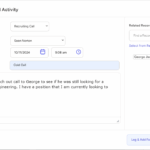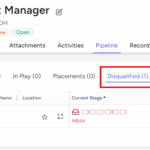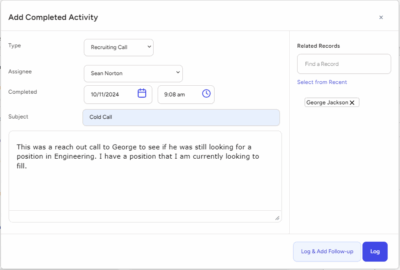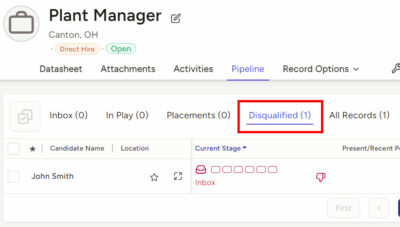In today’s interconnected world, organizations are no longer confined to hiring talent from their local pool. The advent of globalization has opened up a vast and diverse talent pool across borders, providing companies with the opportunity to tap into a rich spectrum of skills and perspectives. However, global talent acquisition comes with a unique set of challenges, and professional recruiters and search consultants play a pivotal role in helping organizations navigate these complexities.
In this comprehensive guide, we will delve into the multifaceted challenges associated with global talent acquisition and present a range of solutions that professionals in this field can implement to overcome them.
Global Talent Acquisition Challenges
There are a myriad of challenges for professional recruiters and search consultants when it comes to global talent acquisition. And we’re going to address them one at a time. As you can see below, they include cultural and language barriers, legal and compliance issues, time zone differences, candidate assessment and evaluation, remote onboarding and integration, technology and infrastructure, cost management, talent retention and engagement, security and confidentiality, and talent scarcity and competition.
So let’s dive into the “deep end of the pool,” shall we?
Cultural and Language Barriers
As businesses seek to expand their talent pool internationally, they must navigate the complexities of diverse communication styles, work ethics, and cultural norms. Language disparities add another layer of difficulty, hindering effective candidate assessment.
To address these challenges, organizations can implement several solutions. First, investing in cross-cultural training for recruiters and search consultants can enhance their understanding of cultural nuances and communication styles. This equips them with the skills needed to navigate diverse environments effectively.
Second, specifying language proficiency requirements in job postings and conducting language assessments during the interview process can ensure that candidates possess the necessary linguistic skills to thrive in the role. This helps mitigate potential misunderstandings and ensures effective communication within the team.
Last, leveraging local expertise by collaborating with experts or hiring partners familiar with the target region’s culture can provide valuable insights during candidate evaluation. These local partners can offer invaluable guidance in navigating cultural nuances and assessing candidates’ fit within the organization.
Legal and Compliance Issues
The intricate landscape of international labor laws, visas, work permits, and tax regulations poses significant hurdles for recruiters and organizations alike. Non-compliance can result in legal entanglements, financial penalties, and damage to the reputation of both the hiring entity and the recruiting personnel.
Addressing these challenges requires a multifaceted approach:
First, close collaboration with legal experts specializing in international labor laws is paramount. Their guidance ensures adherence to legal frameworks throughout the hiring process, mitigating risks associated with non-compliance.
Second, providing comprehensive support for visa and work permit acquisition is crucial. This may involve offering guidance to candidates navigating these processes or partnering with immigration consultants to streamline procedures, facilitating smoother transitions for recruited talent.
In addition, maintaining up-to-date knowledge of immigration and labor laws in target countries is essential. Regular updates and awareness of regulatory changes enable recruiters to adapt strategies accordingly, ensuring ongoing compliance and minimizing potential legal complications.
Time Zone Differences
Coordinating interviews, meetings, and negotiations across different time zones can introduce scheduling conflicts, delays, and frustrations for recruiters and candidates alike. The complexity intensifies when dealing with global recruitment efforts.
One potential solution lies in leveraging scheduling tools tailored to manage multiple time zones efficiently. These tools streamline the coordination process, facilitating smoother communication and organization of interviews and meetings. Additionally, offering flexible working hours can help accommodate diverse time zones, ensuring accessibility and inclusivity throughout the recruitment process. By embracing flexibility, companies can mitigate time zone-related obstacles and enhance the candidate experience.
Moreover, clear communication is paramount. Establishing transparent expectations regarding time zones with both candidates and hiring managers helps minimize confusion and ensures alignment throughout the recruitment journey. Employing standardized practices and guidelines for managing time zone differences fosters clarity and consistency, ultimately improving efficiency and reducing frustrations for all parties involved.
Ultimately, addressing time zone challenges in global talent acquisition requires a combination of technological solutions, flexibility in working arrangements, and transparent communication strategies. By implementing these measures, organizations can navigate time zone disparities more effectively and optimize their recruitment processes on a global scale.
Candidate Assessment and Evaluation
The task of gauging the qualifications and competencies of individuals hailing from diverse cultural and educational backgrounds is intricate and multifaceted. Traditional assessment methodologies often falter in accommodating this diversity, thereby introducing ambiguity into the hiring process.
To address these challenges, several solutions have emerged, including the following three:
- Competency-based interviews offer a tailored approach by focusing on assessing skills and behaviors pertinent to the specific job role. This method transcends the limitations of resume evaluation, providing a more holistic view of candidates.
- Standardized assessments provide an objective yardstick for measuring candidates’ abilities, irrespective of their cultural background. By implementing such tests, organizations can ensure a fair and consistent evaluation process.
- Structured interview panels comprising members from varied backgrounds serve to mitigate bias and offer a broader perspective during candidate evaluations. This approach promotes inclusivity and enhances the accuracy of hiring decisions.
By embracing these solutions, organizations can navigate the complexities of global talent acquisition more effectively, ensuring the recruitment of diverse and qualified candidates best suited to meet their evolving needs.
Remote Onboarding and Integration
Once a candidate is recruited, the task of ensuring their seamless integration into the global workforce becomes paramount. The geographical distance can hinder the establishment of a connection between the new employee and the organizational culture.
One effective solution is the implementation of virtual onboarding programs. These comprehensive programs encompass orientation, training modules, and mentorship opportunities tailored to the remote setting. By providing structured guidance, organizations can facilitate the adaptation process for new hires, helping them familiarize themselves with company practices and values.
Moreover, maintaining regular check-ins with new employees is crucial. Consistent communication during the initial months allows for the timely addressing of concerns and provision of necessary support. This proactive approach demonstrates the organization’s commitment to employee well-being and fosters a sense of belonging.
Additionally, fostering inclusion through virtual team-building activities and initiatives is vital. By promoting interaction among remote team members, organizations create opportunities for collaboration and relationship-building. Such initiatives contribute to a cohesive work environment where every member feels valued and connected despite physical distances.
In essence, addressing the challenges of global talent acquisition requires a combination of structured onboarding processes, consistent communication, and inclusive practices aimed at bridging geographical gaps and fostering a sense of belonging among remote employees.
Technology and Infrastructure
Challenges in global talent acquisition extend beyond mere recruitment hurdles, often stemming from technological and infrastructural limitations prevalent in certain regions. Access to technology and reliable internet connectivity remains a pervasive issue, impeding recruiters’ and candidates’ ability to conduct virtual interviews and assessments efficiently.
To address these challenges, several solutions can be implemented:
First, adaptability is key. Recruiters must be willing to tailor the recruitment process to accommodate candidates with limited access to technology. This may entail resorting to phone interviews or alternative assessment methods where necessary.
Second, providing support resources is essential. Candidates should be equipped with guidance on navigating technological barriers during the recruitment process. Offering assistance in overcoming these challenges can ensure a smoother experience for all parties involved.
Finally, investing in technology is crucial. By allocating resources towards infrastructure and technology solutions, recruiters can enhance the efficiency and accessibility of their processes. Utilizing video interviewing platforms with low bandwidth requirements, for instance, can mitigate connectivity issues and streamline the recruitment journey.
In essence, addressing technology and infrastructure challenges in global talent acquisition demands flexibility, support, and strategic investment to ensure a seamless recruitment experience for all stakeholders involved.
Cost Management
The process entails substantial expenses such as travel costs, relocation packages, and the establishment of international compensation structures. Striking a balance between attracting top-tier talent and controlling expenditures requires careful navigation.
One solution involves conducting a comprehensive cost-benefit analysis. This assessment evaluates the return on investment associated with global hiring, weighing factors such as candidate quality, market expansion, and competitive advantages. Additionally, refining negotiation skills becomes crucial in securing favorable compensation packages and benefits while effectively managing costs.
Another approach is to consider leveraging local talent in specific regions. By tapping into the existing workforce in these areas, relocation expenses can be minimized. This strategy not only reduces financial burdens but also fosters a deeper integration within local markets.
Ultimately, addressing the challenge of cost management in global talent acquisition demands a multifaceted approach. By implementing strategic measures such as thorough cost-benefit analysis, skillful negotiation tactics, and the utilization of local talent pools, organizations can optimize their recruitment processes while mitigating financial risks.
Talent Retention and Engagement
Global talent acquisition presents a multifaceted challenge beyond mere recruitment—it encompasses the imperative of retaining and engaging talent over the long haul. Retention hurdles often stem from cultural disparities, geographical remoteness from the headquarters, and a perceived lack of organizational cohesion. To mitigate these obstacles, several strategic solutions can be deployed.
First, implementing employee support programs tailored to the distinct needs of international hires proves instrumental. Such initiatives may include cultural assimilation programs, mentorship schemes, and avenues for professional development. By catering to the unique requirements of global recruits, organizations foster a supportive environment conducive to long-term engagement.
Second, maintaining transparent channels of feedback and communication is paramount. By facilitating open dialogue, concerns can be promptly addressed, and a sense of belonging cultivated among international employees. This fosters an inclusive organizational culture wherein every member feels valued and heard.
Moreover, facilitating regular visits to headquarters or regional offices whenever feasible is pivotal. These visits provide invaluable opportunities for global talent to forge meaningful connections, deepen their understanding of the organizational ethos, and solidify their commitment to the company’s mission.
In essence, addressing the challenges of talent retention and engagement in global recruitment demands a multifaceted approach that prioritizes support, communication, and cultural integration. By investing in these strategic measures, organizations can effectively nurture a thriving global workforce poised for sustained success.
Security and Confidentiality
During the recruitment process, organizations often divulge sensitive data regarding their strategies, technologies, and future plans to potential candidates. However, maintaining confidentiality becomes daunting, particularly in regions with lax data protection regulations.
To address these challenges effectively, several solutions can be implemented. First, organizations can utilize secure communication tools and platforms to ensure the confidentiality of information exchanged during the recruitment process. These tools offer encryption and other security features to safeguard sensitive data.
Additionally, developing and enforcing stringent data protection policies is crucial. These policies should clearly outline the responsibilities of all parties involved in handling confidential information and establish protocols for its protection.
Furthermore, requiring candidates to sign non-disclosure agreements (NDAs) before sharing sensitive information can provide legal recourse in case of breaches. NDAs outline the terms and consequences of disclosing confidential information, thereby creating a contractual obligation for candidates to maintain secrecy.
By implementing these solutions, organizations can mitigate the risks associated with security and confidentiality in global talent acquisition, ensuring the protection of sensitive information throughout the recruitment process.
Talent Scarcity and Competition
In numerous industries and regions, there exists a shortage of talent possessing the requisite skills and qualifications. Consequently, organizations engage in fierce competition to allure and secure top-tier talent, thereby complicating the recruitment process.
To address these challenges, several solutions prove beneficial. First, investing in talent pipeline development facilitates the establishment of enduring relationships with potential candidates. This strategy ensures a consistent influx of qualified individuals over time, mitigating the impact of talent scarcity. Second, organizations can enhance their employer branding to augment their appeal to top talent. By showcasing unique cultural attributes, values, and opportunities for growth, companies can distinguish themselves as desirable employers. Finally, offering competitive compensation packages and benefits is paramount. Such measures position organizations as employers of choice, thereby attracting and retaining high-caliber talent.
It should come as no surprise that the challenges inherent in global talent acquisition necessitate proactive strategies. By focusing on talent pipeline development, employer branding enhancement, and competitive compensation offerings, organizations can navigate the complexities of talent scarcity and fierce competition effectively.
The landscape of global talent acquisition is undoubtedly complex, with challenges ranging from cultural barriers to talent scarcity and security concerns. However, by embracing proactive strategies and leveraging innovative solutions, organizations can navigate these obstacles successfully. From implementing cross-cultural training and stringent data protection policies to investing in talent pipeline development and competitive compensation offerings, every step taken brings companies closer to building a diverse, skilled, and engaged global workforce. As the world continues to evolve, so too must our approaches to talent acquisition, ensuring that organizations remain competitive and resilient in an increasingly interconnected marketplace.









